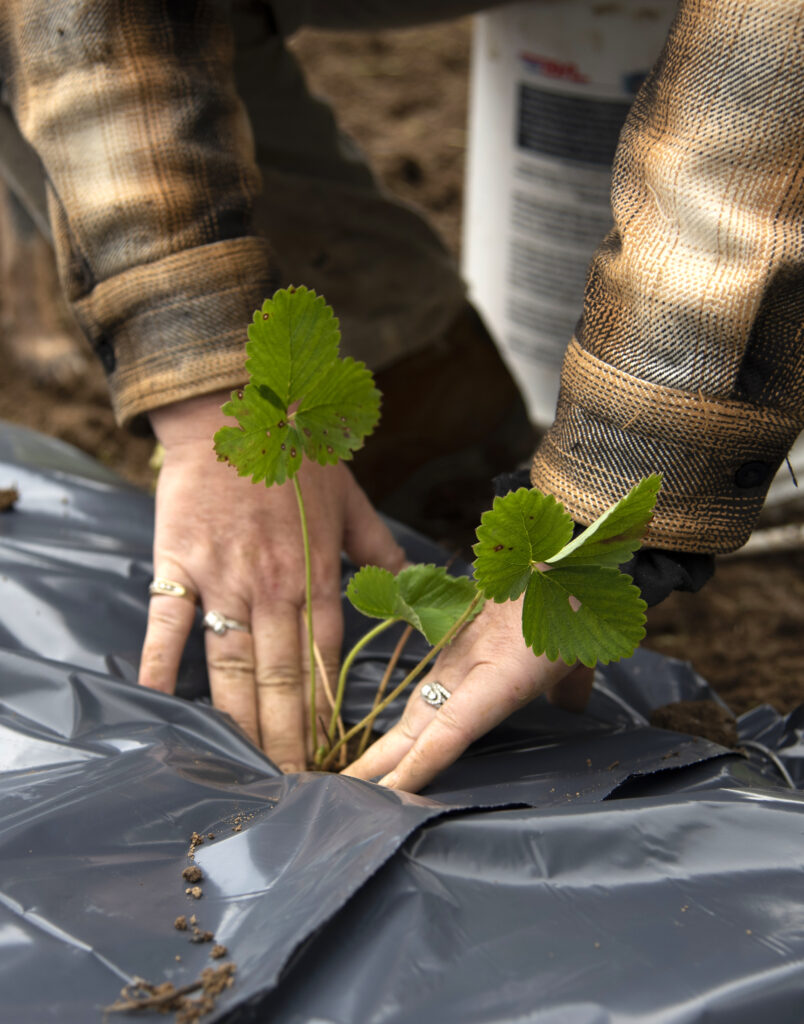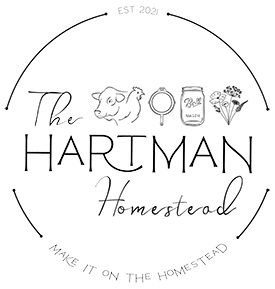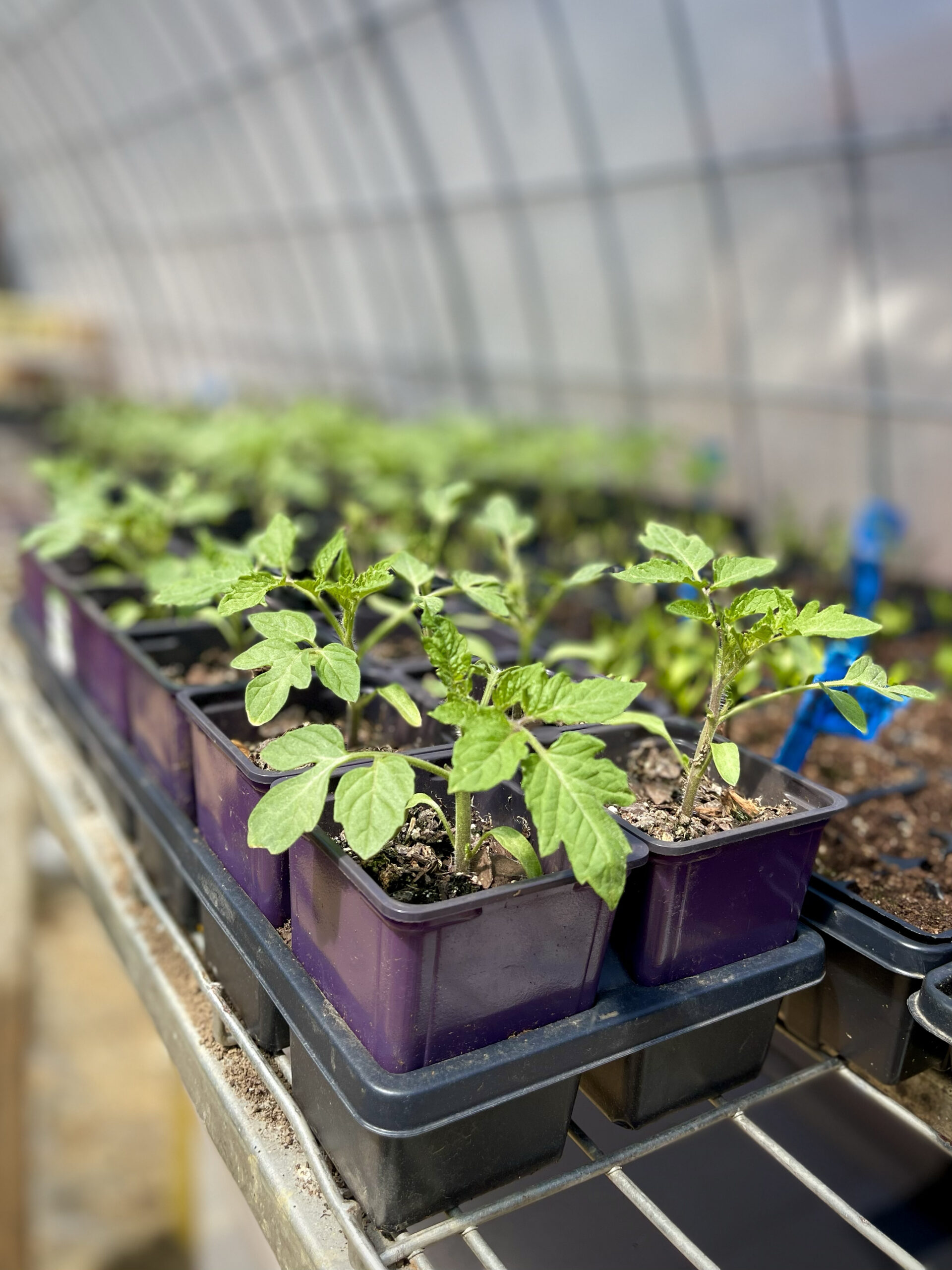I always start my seeds too late… I inevitably think I have more time and then by the time the right time comes, time has run out. Be better than me! Use your first and last frost dates, trust them, and start your seeds when you are supposed to. Now, you also have the option to purchase veggie plants at your local nursery or home box store. I have had to use that option on several occasions, just last year in fact. I started my seeds (too late), then I killed them. Yup… fried them in the sun. Fried green tomato plants… I didn’t think I had enough time to start more seed, so I went to the nursery that happened to be having a sale on tomato and pepper plants for only $1 a piece! I couldn’t believe it. I started another couple trays of seeds (strictly out of spite… I WILL WIN) and I laid out $20 in plants at the store. Welp, the plants from the store did great, and so did the second set of seeds I planted. So consequently, I had tomato plants coming out of my ears last year. I did give some of them away, which I love to do. This many tomato plants were a curse and a blessing: A blessing because for the first time I made pasta sauce, pizza sauce, chili base, tomato juice, and bloody Mary mix, all because I had too many tomatoes. The curse was finding a place to keep all of these tomatoes until I was ready to process. That is another story…
Direct Sow vs. Transplant
Direct sow: put the vegetable seed (or herb, flower, etc) straight in the ground for it to begin growing.
Transplant: Also referred to as plant starts or seed starts. To start the growing process indoors, letting the plant grow and get stronger, then transplanting (plant) into the garden at the right time.


There are benefits to both, but some veggies do better when you directly plant (sow) the seeds into the ground. Zucchini and green beans are a great example here. I don’t start my zucchini and green bean seeds indoors because they are such prolific (not an understatement) growers. They will continue to produce for you through the entire growing season so I really have no need to try to prolong its growing life. Corn is a bit finicky – It doesn’t really like to be transplanted. It likes nice hot soil, so this is another seed that is plugged directly into the ground.
Tomatoes and peppers are primarily what I start indoors. And I do this because I want to squeeze out as many veggies as I possibly can for as long as I can. It takes 7-14 days for these seeds to germinate and another few weeks for it to be strong enough to transplant into the ground. So I get a head start on the growing season by (ideally) planting seeds into seed pots 4-6 weeks before my last frost date. That means that instead of waiting to plant the seeds outside after my last frost date, I have a four-week head start by planting a grown plant into the ground after my last frost date.
Your first and last frost dates
Based on what you read above, clearly you don’t have to start seeds, but for us, it gives us more time to grow more veggies, and we need all of the time we can get. Our fairly short growing season is basically from Mothers Day to October 1st. But last year we had a couple of frosty mornings in September and that was the official end to our garden.
Our first and last frost dates are the first thing you need to understand when starting not just seeds, but any garden in general. The last frost date is your spring frost date, and first frost is in the fall. Your first and last frost date can easily be found by doing a simple google search by asking first and last frost dates for your zip code.
Cold Season Veggies
There are some cold season veggie plants that can handle a bit of frost and can be planted or seeded before the last frost of Spring. You can start these seeds indoors in February or March, then transplant your plant starts two to three weeks before your last frost date:
- Beets
- Broccoli
- Brussels Sprouts
- Cabbage
- Carrots
- Cauliflower
- Chives
- Kale
- Lettuce
- Onion
- Peas
- Radishes
- Spinach
- Strawberries
Warm Season Veggies
These warm season crops should be planted outside after the last frost of Spring. You can put a seed directly in the ground for most of these at this point, but starting certain seeds indoors will stretch your growing season out even further.
- Artichoke
- Basil
- Beans
- Celery
- Corn
- Cucumber
- Eggplant
- Melons
- Okra
- Tomatoes–Start indoors
- Peppers–Start indoors
- Potato
- Pumpkin
- Summer Squash (i.e. zucchini, yellow squash, etc. )
- Winter Squash (i.e. butternut, acorn, spaghetti, etc.)
The next question I think may be, so how do I start my garden? I often hem and haw over this myself, most recently just a few weeks ago. I wanted to start a new cut-flower garden but didn’t know where to begin or how to do it. I didn’t have a plan and I didn’t have a clue and (of course) I came up with the idea too dang late. But I didn’t care… I wanted to do it so, I simply started. I knew that there were two things I needed to start a cut flower garden: seeds and dirt. So Rickie and I built a few raised flower beds from some old fence boards we had and filled them with some good dirt we had near one of our pastures. Then I consulted “the You Tube” to determine which flowers I wanted and bought seeds from Amazon. Bottom line is this – If you want to start a garden (or anything in life), just start. Take a look in your pantry and your freezer. See all of those veggies you bought in the store? That is what you plant in your garden. Sure, I am simplifying things quite a bit, but the first step in starting any endeavor is simply starting. Start it. Learn it. Grow it. Eat it. Love it!!

